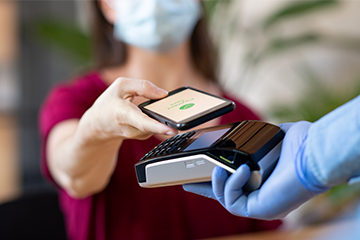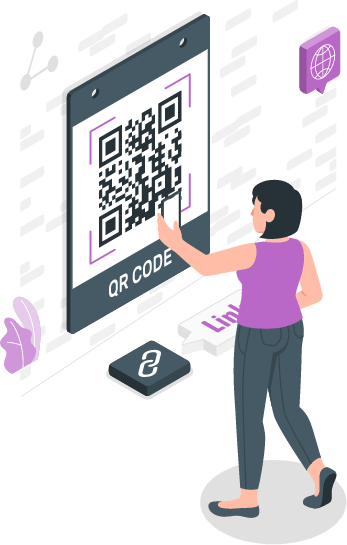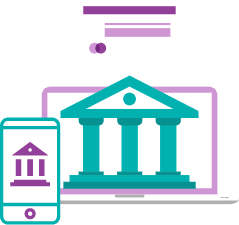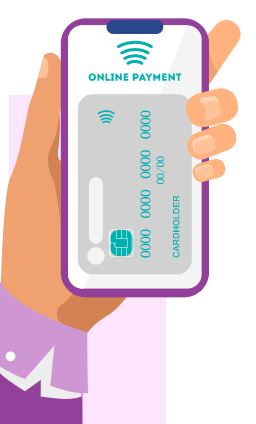

increasing penetration of mobile networks, banking moved online and on mobile apps. And as the world socially distanced in a bid to combat COVID-19, contactless banking became more important than ever before. Will the future of banking be truly contactless and what exactly does this involve?
What is Contactless Banking?

Mobile and
internet banking

Video-based
customer identification
process (VCIP)

The Technology Powering Contactless Banking
Most contactless payment systems are based on RFID (radio frequency identification) or NFC (Near Field Communication) technologies. Not only do they guarantee quick effortless payments, but they also eliminate the need for PINs or signatures. The payments they power are twice as fast as normal cards and their many in built security features eliminate the possibility of duplicate payments and ensure end-to-end encrypted security. It is likely that dual interface cards, with chip and NFC, will become the standard in the near future.
The payment space has seen the most innovation with concepts like QR code-based payments, tap and pay POS terminals and card less ATMs. As COVID 19 continues to rage, countries are raising the contactless transactions limits to help keep customers and employees safe.2 Entities like Bank of America, Wells Fargo, Citibank, Bank Capital One and Chase have ramped up the issuing of EMV cards. Credit card giant Mastercard saw a 40 percent jump in contactless
payments in the first quarter of last year. This includes tap to pay and mobile pay options.3 Even point of sales banking is going through a significant transformation with financing platforms allowing retailers to get pre-approved offers from multiple lenders for the customer to choose from without paperwork. These platforms are slowly becoming industry standards in the contactless lending area. The mobile payments space is also evolving rapidly, with many big brands like Google Pay, Apple Pay, Venmo, MasterCard, and PayTm leveraging new technologies to offer innovative seamless smartphone-based payment options. Tokenization makes mobile wallets a very secure medium for payments.
Symbiotic Partnerships to Build a Robust Contactless Ecosystem
The emergence of open banking has helped both fintechs and banks to leverage APIs to offer better products and services.And today the industry is witnessing many interesting partnerships between fintechs and traditional banks to develop innovative applications that can support a contactless economy. Blockchains and cryptocurrency are also gathering momentum in the mobile payment segment. Organizations like Movile are realizing the potential of bitcoins for in-game
micro payments as well as an alternate mobile payment currency across developing economies like Brazil. This space is witnessing some exciting innovations right now. For example, Google’s Hands-Free mobile payment app allows customers to make payments even as the phone remains in their wallets or pockets clearXchange a joint venture by JPMorgan Chase & Co., Bank of America Corp., Wells Fargo & Co. and U.S. Bancorp, allows customers to instantly transfer funds to other accounts through their phones. And then there are fintechs like Venmo processing more than $1 billion in one month in mobile P2P payments and Square processing billions more on mobile devices.4
While contactless modes of banking were increasingly making their presence felt, the pandemic accelerated the pace of adoption with increasing acceptance by both customers as well as businesses. The space is set for significant growth over the next few years spurred by the speed, convenience and security offered by these payment models. And it will see some interesting innovations like o touch payment models for public transport, video-based banking, virtual assistants to tap-to-pay cards and more. Banking will go contactless across all touchpoints as banks innovate and evolve their business and customer engagement models to make it more customer friendly, embedded, and safe.
Sources:
1Productmint
2GlobeNewswire
3DFPI
4AiteNovarica
Binesh K
Binesh holds a management degree from IIM-L and has worked in Management Consulting, EdTech & Insurance sectors